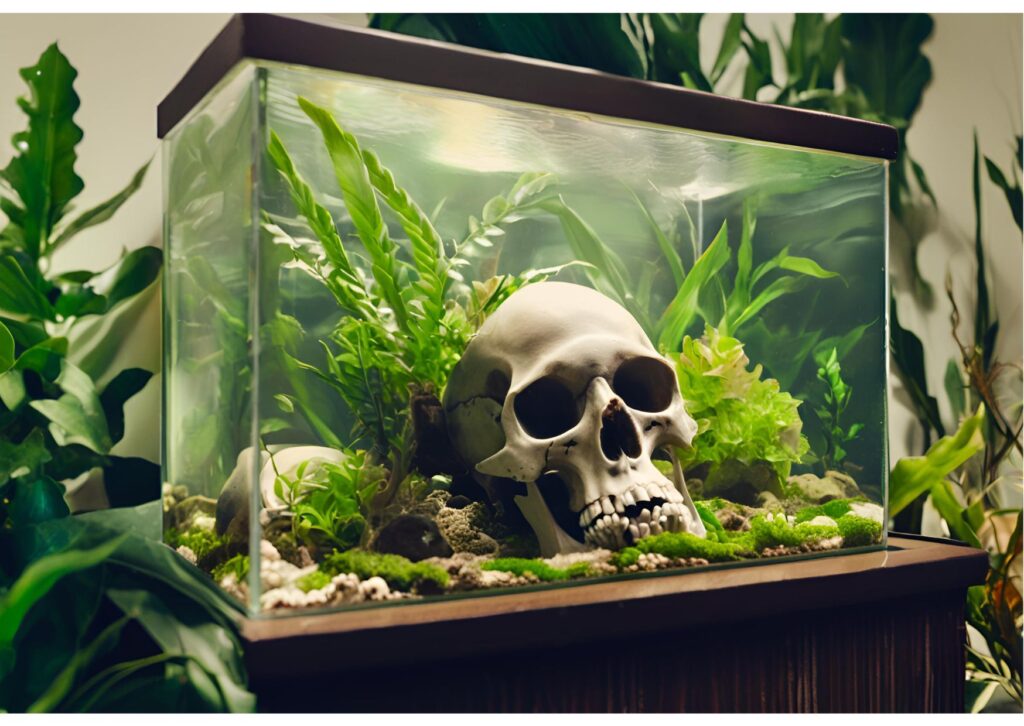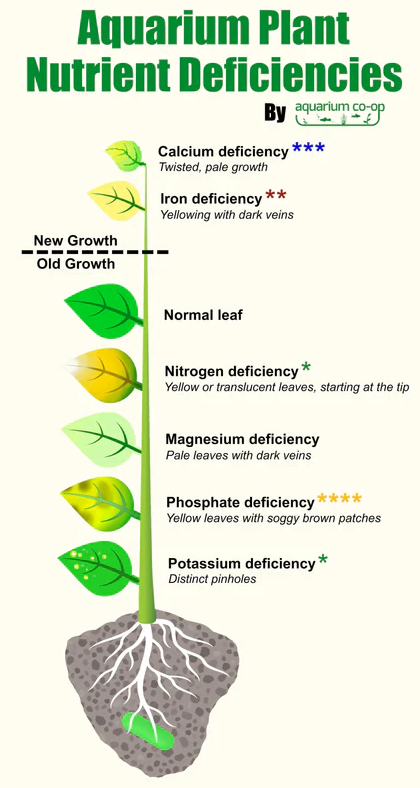Understanding Nutrient Deficiencies in Aquarium Plants

Aquarium plants, like all plants, require specific nutrients to thrive. When these nutrients are lacking, plants exhibit various deficiency symptoms, which can lead to poor growth or even plant death. Recognizing and addressing these deficiencies promptly is crucial for maintaining a healthy aquarium ecosystem.
Nutrient Deficiencies in Aquarium Plants
Having trouble with dying aquarium plants? Nutrient deficiencies might be the cause. Here’s how to identify and fix them:
1. Nitrogen Deficiency
Symptoms:
- Yellowing of older leaves.
- Leaves may become translucent.
- Stunted growth and smaller leaves.
Solution:
- Increase nitrogen in the aquarium through fertilizers.
- Consider using nitrogen-rich supplements like ammonium nitrate or urea.
- Ensure regular water changes to prevent excessive nitrate buildup.
Detailed Description: Nitrogen is vital for plant growth as it is a key component of amino acids, proteins, and chlorophyll. In a nitrogen-deficient environment, plants prioritize younger leaves for available nitrogen, leading to yellowing of older leaves. This deficiency often occurs in heavily planted tanks or those with fast-growing plants. Regular dosing with a balanced fertilizer containing nitrogen can help maintain appropriate levels.
2. Iron Deficiency
Symptoms:
- Yellowing of new leaves, while veins remain dark.
- Poor leaf development and weak growth.
Solution:
- Supplement with iron-rich fertilizers or chelated iron.
- Monitor iron levels regularly using test kits.
- Use root tabs for iron-hungry plants.
Detailed Description: Iron is essential for chlorophyll production and enzymatic functions. A lack of iron results in chlorosis, particularly in new leaves since iron is immobile within the plant. This deficiency is common in aquariums with high pH levels or those with inadequate substrate nutrients. Adding chelated iron, which is more readily absorbed by plants, can alleviate these symptoms.
3. Potassium Deficiency
Symptoms:
- Pinholes in leaves surrounded by yellow or brown edges.
- Older leaves may develop brown spots and die off.
- Weak stems and slow growth.
Solution:
- Increase potassium levels using potassium-specific fertilizers.
- Regularly dose with a complete fertilizer containing potassium.
- Consider potassium sulfate as a supplement.
Detailed Description: Potassium is crucial for various plant functions, including photosynthesis, enzyme activation, and water regulation. Inadequate potassium disrupts these processes, leading to characteristic pinholes and marginal necrosis in leaves. Fast-growing plants and those in high-light conditions are particularly susceptible. Consistent potassium supplementation ensures healthy and robust plant growth.
4. Phosphate Deficiency
Symptoms:
- Yellowing and browning of older leaves.
- Leaves may become brittle and develop dark patches.
- Slowed growth and reduced root development.
Solution:
- Add phosphate fertilizers to the aquarium.
- Ensure balanced nutrient dosing to avoid competition with other elements.
- Use phosphate test kits to monitor levels.
Detailed Description: Phosphates are essential for energy transfer, photosynthesis, and nutrient transport within plants. A lack of phosphates results in poor plant health and vitality. This deficiency is often seen in tanks with insufficient fertilization or high plant biomass. Regular dosing with a phosphate-specific fertilizer can correct and prevent these issues.
5. Magnesium Deficiency
Symptoms:
- Older leaves turn yellow while veins remain green.
- Leaves may curl or develop a mottled appearance.
- Slower growth and weaker overall plant health.
Solution:
- Supplement with magnesium, often included in comprehensive fertilizers.
- Use magnesium sulfate (Epsom salts) as a direct supplement.
- Ensure adequate levels in tap water or aquarium substrate.
Detailed Description: Magnesium is a central component of chlorophyll and plays a vital role in photosynthesis. Deficiency symptoms often appear in older leaves since magnesium is mobile within the plant and translocated to new growth. Consistent magnesium supplementation ensures vibrant and healthy plant foliage.
6. Calcium Deficiency
Symptoms:
- New leaves are twisted or deformed.
- Growth tips may die off, and root development is poor.
- Overall stunted growth and brittle leaves.
Solution:
- Increase calcium levels using calcium carbonate or similar supplements.
- Ensure proper water hardness (GH) in the aquarium.
- Use a balanced fertilizer that includes calcium.
Detailed Description: Calcium is essential for cell wall structure and stability. Deficiency typically affects new growth, leading to twisted, deformed leaves and weak root systems. Hard water areas usually provide sufficient calcium, but soft water aquariums may require supplementation. Maintaining appropriate calcium levels supports strong and healthy plant development.
General Tips for Managing Nutrient Deficiencies
- Regular Testing: Use test kits to monitor nutrient levels and water parameters regularly.
- Balanced Fertilization: Employ a comprehensive fertilization routine that includes all essential nutrients.
- Water Changes: Perform regular water changes to replenish trace elements and maintain water quality.
- Substrate Choice: Use nutrient-rich substrates or supplement with root tabs for heavy feeders.
- Adjust Lighting: Ensure appropriate lighting levels for your plant types to optimize photosynthesis and nutrient uptake.
By understanding and addressing nutrient deficiencies, you can maintain a lush and thriving aquarium. Healthy plants contribute to the overall stability of the aquarium environment, providing oxygen, reducing algae growth, and offering habitats for fish and other aquatic creatures.
Here’s a quick visual guide from Aquarium Co-op.



